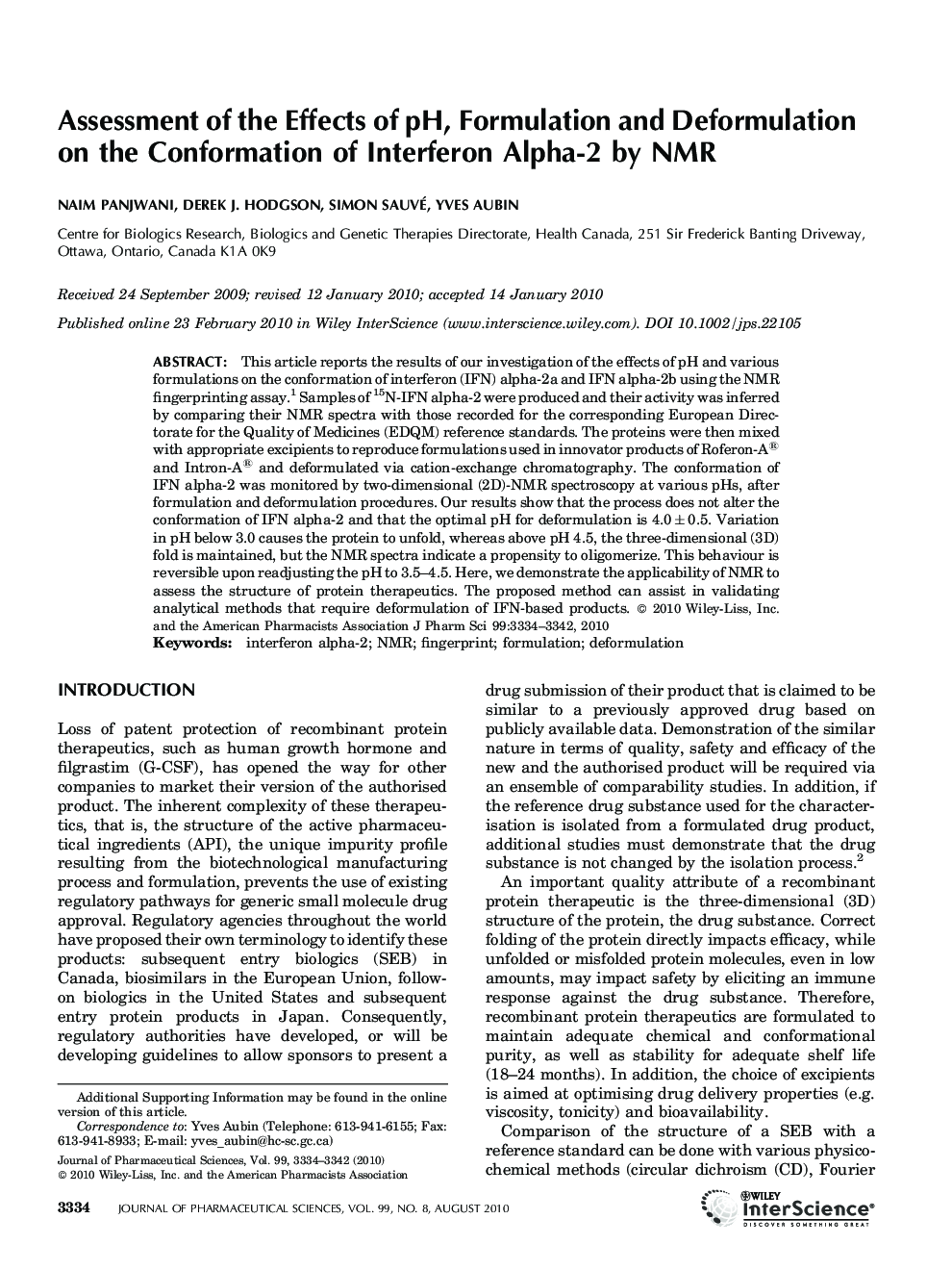| Article ID | Journal | Published Year | Pages | File Type |
|---|---|---|---|---|
| 2486027 | Journal of Pharmaceutical Sciences | 2010 | 9 Pages |
Abstract
This article reports the results of our investigation of the effects of pH and various formulations on the conformation of interferon (IFN) alpha-2a and IFN alpha-2b using the NMR fingerprinting assay.1 Samples of 15N-IFN alpha-2 were produced and their activity was inferred by comparing their NMR spectra with those recorded for the corresponding European Directorate for the Quality of Medicines (EDQM) reference standards. The proteins were then mixed with appropriate excipients to reproduce formulations used in innovator products of Roferon-A® and Intron-A® and deformulated via cation-exchange chromatography. The conformation of IFN alpha-2 was monitored by two-dimensional (2D)-NMR spectroscopy at various pHs, after formulation and deformulation procedures. Our results show that the process does not alter the conformation of IFN alpha-2 and that the optimal pH for deformulation is 4.0 ± 0.5. Variation in pH below 3.0 causes the protein to unfold, whereas above pH 4.5, the three-dimensional (3D) fold is maintained, but the NMR spectra indicate a propensity to oligomerize. This behaviour is reversible upon readjusting the pH to 3.5-4.5. Here, we demonstrate the applicability of NMR to assess the structure of protein therapeutics. The proposed method can assist in validating analytical methods that require deformulation of IFN-based products. © 2010 Wiley-Liss, Inc. and the American Pharmacists Association J Pharm Sci 99:3334-3342, 2010.
Keywords
Related Topics
Health Sciences
Pharmacology, Toxicology and Pharmaceutical Science
Drug Discovery
Authors
Naim Panjwani, Derek J. Hodgson, Simon Sauvé, Yves Aubin,
